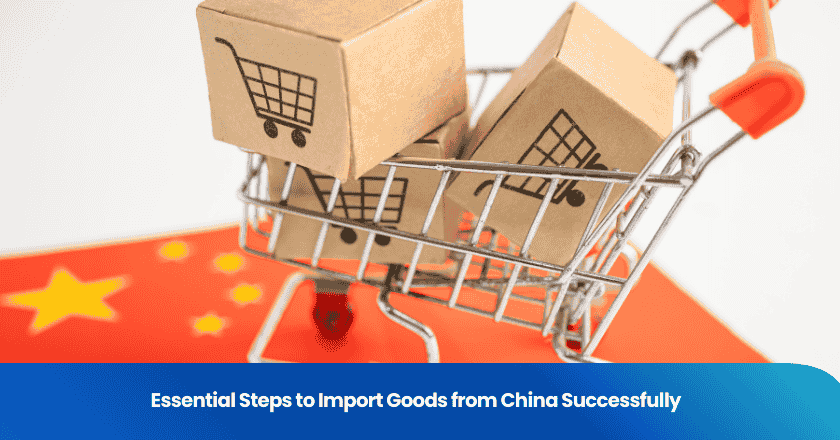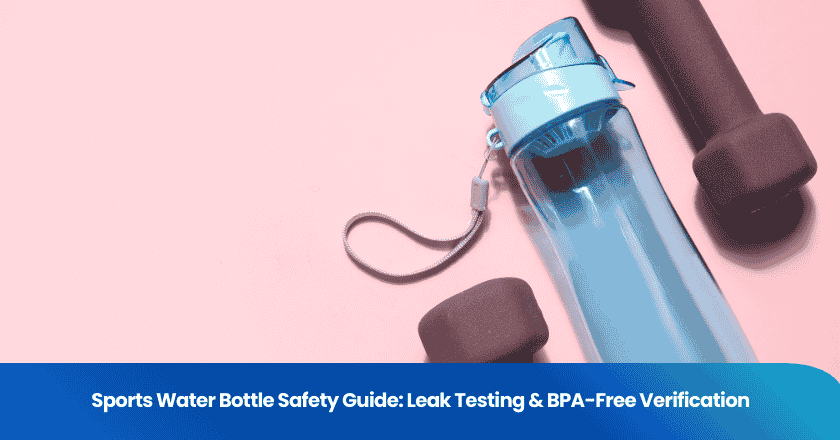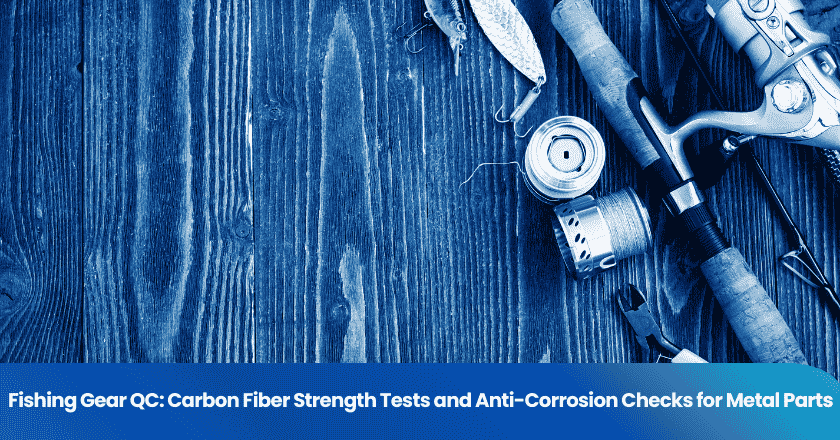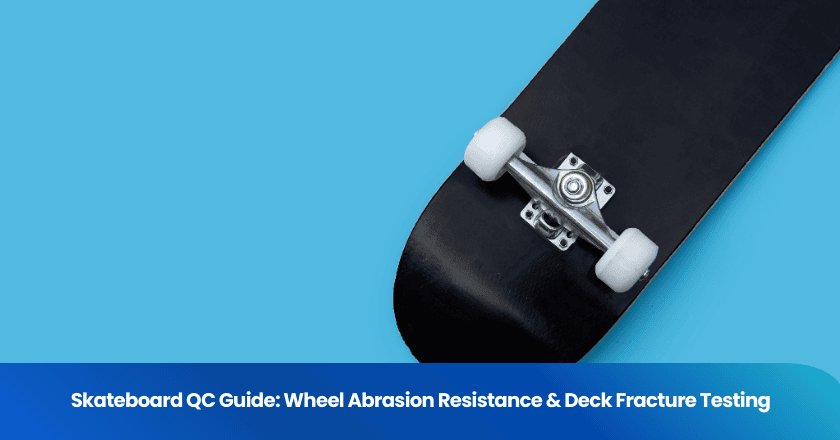
If you want to import from china, you need a clear plan and a strong understanding of the process. Importing from china involves more than just finding a supplier. You must follow legal requirements, check import restrictions, and manage shipping. Many people importing from china make mistakes with documents or customs. You can avoid common pitfalls by learning each step. Imports from china can help your business grow, but you should always check the rules for importing goods and track your imports carefully.
Import Strategy
Identify Goods
You must start your import process by selecting the right products. When importing from china, you need to research which goods have strong demand in your market. Study trends, customer preferences, and seasonal changes. Make a list of potential products and compare their popularity. You should also check if the products meet your country’s safety and quality standards.
Tip: Always request product samples before you import goods from china. This step helps you check quality and avoid costly mistakes.
Consider the size, weight, and value of each item. These factors affect shipping costs and customs duties. If you plan to import electronics, clothing, or machinery, you must understand the specific requirements for each category. The right choice at this stage will make the rest of your import process smoother.
Target Market
You need to define your target market before importing products from china. Analyze who will buy your imports and where you will sell them. Create a profile of your ideal customer. Think about age, location, and buying habits. This information guides your product selection and marketing strategy.
- Identify the main competitors in your market.
- Study their pricing and product range.
- Find gaps where your imports can stand out.
When importing goods, you must also consider local regulations and cultural preferences. Some products may face restrictions or require special certifications. Research these rules early in your import process to avoid delays. Understanding your target market ensures your imports from china reach the right customers and generate profit.
Note: Successful importing from china depends on matching the right products with the right buyers. Careful planning at this stage reduces risks and increases your chances of success.
Import Rights
Eligibility
Before you start your import journey, you must confirm your eligibility. Every country sets its own requirements for who can import goods. In the United States, you do not need a special license for most imports. However, you must have a registered business and a valid tax identification number. Some products, such as food or medical devices, require extra permits. You should check the requirements for your specific goods before you place an order.
Tip: Contact your local customs office to verify if your imports need special approval. This step helps you avoid delays and penalties.
You must also keep accurate records of your import activities. Customs authorities may ask for these records during inspections. Good recordkeeping supports your business and ensures you meet all legal requirements.
Compliance
You must follow all import laws and regulations. Compliance means you obey the rules set by customs and other government agencies. Each product category has its own requirements. For example, electronics may need safety certifications. Clothing imports must meet labeling standards. You should review the rules for your goods before you ship them.
A simple checklist can help you stay compliant:
- Register your business for import activities.
- Obtain all required permits for your products.
- Check if your goods face any restrictions.
- Prepare accurate documents for customs clearance.
| Step | Action Required |
|---|---|
| Register Business | Get tax ID and legal status |
| Obtain Permits | Apply for necessary licenses |
| Check Restrictions | Review import requirements |
| Prepare Documents | Gather invoices and records |
You protect your business by following these steps. Compliance reduces the risk of fines and shipment delays. Always stay updated on import regulations to keep your imports running smoothly.
Restrictions & Classification
Product Restrictions
You must check if your products face any import restrictions before you start the process. Many countries, including the United States, limit or ban certain items for safety, health, or environmental reasons. You may not import goods such as hazardous chemicals, counterfeit items, or products that violate intellectual property laws. Some categories, like food, cosmetics, or electronics, require special certifications or testing.
Tip: Always review the official customs website for the latest list of restricted and prohibited goods. This step helps you avoid costly mistakes and shipment delays.
You should also consider local regulations that affect your imports. For example, some states or regions have additional rules for specific products. If you plan to import toys, you need to check for safety standards and labeling requirements. You protect your business by staying informed and following all restrictions.
Harmonized Tariff Codes
You must classify your goods correctly using Harmonized Tariff Codes (HTS). These codes help customs officials identify your products and determine the correct duties and taxes. Each product type has a unique code based on its material, function, and use. You can find the right code by searching the official HTS database or consulting with a customs broker.
| Product Type | Example HTS Code | Duty Rate (%) |
|---|---|---|
| Apparel | 6203.42.40 | 16.0 |
| Electronics | 8542.31.00 | 0.0 |
| Toys | 9503.00.00 | 0.0 |
You must classify your goods accurately to avoid penalties and delays. Incorrect codes can lead to higher fees or rejected shipments. You should keep records of your classifications and update them if your products change. Customs authorities may request this information during inspections.
Note: Proper classification streamlines your import process and ensures compliance with all regulations.
Vet Suppliers
Verify Credentials
You must check every supplier before you import goods from china. Many businesses in china offer products, but not all meet your standards. Start by asking for the supplier’s business license. You should confirm the registration details match official records. Use government databases or third-party verification services for this step.
A reliable supplier will share company documents and certifications without hesitation. You can also request references from other buyers who have imported from china. Contact these buyers to ask about their experience. If you find any red flags, move on to another supplier.
Tip: Always visit the supplier’s factory in china if possible. This visit helps you see their operations and build trust.
You should also check if the supplier has export experience. Suppliers with a strong export record understand international shipping and customs rules. This knowledge reduces the risk of delays.
Quality Standards
You need to set clear quality standards before you place an order with any supplier in china. Share your product specifications and ask for samples. A reliable supplier will provide samples that match your requirements. Test these samples for durability, safety, and compliance with your country’s regulations.
Create a checklist for quality control:
- Product dimensions
- Material type
- Packaging details
- Safety certifications
You should arrange for third-party inspections in china before shipment. These inspections help you catch problems early. If the supplier refuses inspections, you should consider other options. Reliable supplier relationships depend on transparency and consistent quality.
Note: Clear communication with your supplier in china ensures you receive products that meet your expectations.
Negotiate & Order
Contracts & Incoterms
You must secure clear agreements before you import goods from china. A written contract protects your interests and sets expectations for both you and your supplier in china. This contract should outline product specifications, payment terms, delivery schedules, and penalties for delays or defects. You should also include dispute resolution methods.
You need to understand Incoterms when you negotiate with suppliers in china. Incoterms define who pays for shipping, insurance, and customs duties. Common Incoterms include FOB (Free On Board), CIF (Cost, Insurance, and Freight), and EXW (Ex Works). Each term changes your responsibilities and costs. For example, FOB means the supplier in china covers costs until the goods reach the port, while you handle shipping from there.
Tip: Always clarify Incoterms in your contract. This step prevents confusion and unexpected expenses during the import process.
Place Order
Once you finalize the contract, you can place your order with the supplier in china. You should confirm all details, such as product quantity, packaging, and labeling requirements. Request a proforma invoice from your supplier in china. This document lists the agreed price, payment terms, and shipping details. Review it carefully before you make any payment.
You should use secure payment methods, such as bank transfers or letters of credit, to protect your funds. Keep records of all transactions and communications with your supplier in china. These records help you resolve disputes and track your order status.
- Double-check order details before payment.
- Set clear deadlines for production and shipment.
- Communicate regularly with your supplier in china to monitor progress.
Note: Careful planning and clear communication with suppliers in china reduce risks and ensure a smooth import experience.
Shipping Options
Sea vs Air Freight
You must choose the right shipping method when importing goods to the usa. Sea freight and air freight both offer unique advantages for shipping from china to usa. Sea freight works best for large, heavy shipments. You can save money with sea freight if you ship in bulk. Transit times for sea freight usually range from 20 to 40 days. This method suits businesses that plan ahead and do not need urgent delivery.
Air freight provides faster delivery for shipping from china to usa. You can receive your goods in as little as 3 to 7 days. Air freight works well for small, high-value, or time-sensitive products. You pay more for air freight, but you gain speed and reliability. Many importers use air freight for electronics or urgent orders.
Tip: Compare total costs, delivery times, and product type before you decide between sea and air freight for shipping from china to usa.
Logistics Partners
You need reliable logistics partners to manage shipping from china to usa. Freight forwarders help you coordinate the entire process. They handle booking, documentation, and customs clearance for your shipments to the usa. Customs brokers guide you through usa import regulations and help you avoid delays.
You should select partners with experience in shipping from china to usa. Ask about their track record and support services. Good logistics partners keep you informed at every step. They help you track your shipment and solve problems quickly.
- Choose partners who understand usa customs rules.
- Request clear communication and regular updates.
- Review service agreements before you sign.
Note: Strong logistics support ensures your shipping from china to usa stays on schedule and within budget.
Step-by-Step Guide: Import Process
You need a clear step-by-step guide to manage the import process from China to the USA. This guide helps you move from supplier selection to final delivery. Each stage in the import process plays a key role in your success. You must pay close attention to customs, shipping, and documentation. Understanding the customs clearance process in the USA protects your business from delays and penalties.
Customs Bond
You must secure a customs bond before your goods arrive in the USA. The customs bond acts as a guarantee to the U.S. government that you will pay all duties, taxes, and fees for your import. You can choose between a single-entry bond for one shipment or a continuous bond for multiple imports. The customs bond is essential for the customs clearance process. Without it, customs will not release your goods. You should work with a licensed customs broker to arrange the right bond for your import process. The broker helps you follow all customs rules and keeps your imports moving.
Tip: Always check the latest U.S. Customs and Border Protection (CBP) requirements for customs bonds. This step ensures your import process stays compliant.
Track Shipment
You must track your shipment at every stage of the import process. Tracking helps you know where your goods are and when they will arrive in the USA. Most logistics partners offer online tracking tools. You can use these tools to monitor your imports from the moment they leave China until they reach your warehouse. Tracking supports smooth customs clearance by letting you prepare documents and payments in advance. If you spot any delays, you can contact your logistics partner or customs broker for updates. Staying informed helps you avoid extra storage fees and keeps your import process on schedule.
Note: Understanding each step in the import process and staying updated with U.S. CBP policies will help you complete customs clearance quickly and efficiently.
Required Documentation
When you import goods into the usa, you must prepare the required documentation. Customs officials in the usa will review your paperwork before they release your shipment. Missing or incorrect documentation can cause delays or extra costs. You should understand the main types of documentation and their requirements.
Commercial Invoice
You must include a commercial invoice with every shipment to the usa. This document lists the buyer, seller, product description, quantity, unit price, and total value. Customs in the usa use the commercial invoice to assess duties and taxes. You should make sure all information matches your order and shipping details. Double-check the invoice for accuracy before you send your goods.
Tip: Always keep a copy of the commercial invoice for your records. Accurate documentation helps you resolve disputes with customs in the usa.
Packing List
A packing list gives customs in the usa a detailed breakdown of your shipment. This document shows the contents, weight, and dimensions of each package. You should match the packing list to the commercial invoice. Customs officers in the usa use the packing list to inspect your goods and verify the shipment. Clear and complete documentation speeds up the clearance process.
- List each item separately.
- Include the number of boxes and their measurements.
- Add any special handling instructions.
Import Permits
Some products require special import permits before entering the usa. You must check the requirements for your goods before shipping. The usa may ask for permits for items like food, chemicals, or electronics. You should apply for these permits early to avoid delays. Attach copies of all permits to your shipment documentation.
Note: The required documentation for the usa changes based on your product type. Always review the latest requirements before you import.
Duties & Taxes
Calculate Costs
You must understand how to calculate and pay duties when importing goods into the usa. The total landed cost includes the product price, shipping, insurance, and all required fees. You need to check the Harmonized Tariff Schedule to find the correct duty rate for your goods. Customs in the usa use this rate to determine how much you owe.
To calculate and pay duties, start by multiplying the customs value of your shipment by the duty rate. Add any additional taxes or fees that apply in the usa. Many importers use online calculators or consult with customs brokers to ensure accuracy. You should always double-check your calculations before your goods arrive in the usa.
Tip: Keep all invoices and shipping documents organized. Accurate records help you calculate and pay duties quickly and avoid mistakes.
| Step | Action |
|---|---|
| 1. Find Duty Rate | Use the Harmonized Tariff Schedule |
| 2. Calculate Value | Add product cost, shipping, insurance |
| 3. Apply Duty Rate | Multiply value by duty percentage |
| 4. Add Taxes/Fees | Include any extra charges in the usa |
Pay Fees
You must pay duties and taxes before customs in the usa will release your shipment. The payment process usually happens through your customs broker or logistics partner. They help you calculate and pay duties and submit the required fees to the usa authorities.
You can pay duties and taxes using electronic payment systems, bank transfers, or certified checks. Make sure you pay all fees on time to avoid delays at the port of entry in the usa. If you do not pay duties and taxes promptly, customs may hold or return your goods.
Note: Always confirm payment receipts and keep copies for your records. This step protects your business and ensures smooth delivery in the usa.
You should review your import records regularly. This habit helps you track how you calculate and pay duties for each shipment. Staying organized makes future imports into the usa easier and more efficient.
Customs Clearance
Inspection
You must prepare for the inspection stage of the customs clearance process when your goods arrive in the usa. Customs officers in the usa review your shipment to verify the contents and check all documentation. They inspect the goods for compliance with usa regulations and confirm that you have paid all duties and taxes. You may experience a physical inspection, an X-ray scan, or a document review. Customs uses these methods to prevent illegal imports and protect consumers in the usa.
Tip: Organize your paperwork before your shipment reaches the usa. Accurate documents help you pass the customs clearance process quickly.
Customs may request additional information or samples if they find discrepancies. You should respond promptly to any requests from customs officials in the usa. Delays often occur when customs cannot verify the shipment details. You can avoid problems by keeping your records up to date and communicating with your customs broker throughout the customs clearance process.
Delivery
After your goods clear customs in the usa, you move to the delivery stage. Customs releases your shipment once you complete the customs clearance process and meet all requirements. Your logistics partner arranges transportation from the port to your warehouse or final destination in the usa. You should track your delivery to ensure your goods arrive on time and in good condition.
- Confirm the delivery schedule with your logistics provider.
- Inspect the goods upon arrival in the usa.
- Report any damage or missing items to customs and your logistics partner.
| Step | Action |
|---|---|
| Customs | Complete customs clearance |
| Delivery | Arrange final transportation |
You must keep records of the customs clearance process and delivery for future reference. These records help you resolve disputes and support future imports into the usa. Successful customs clearance ensures your goods reach your customers without unnecessary delays.
Importing from China: Common Pitfalls
When you start importing from china, you face several common pitfalls that can disrupt your business. By understanding these mistakes, you can avoid delays, extra costs, and legal issues.
Documentation Errors
You must pay close attention to documentation when importing from china. Many importers submit incomplete or inaccurate paperwork. Customs in your country require precise documentation for every shipment. If you miss details on your commercial invoice or packing list, customs may hold your goods. You should double-check all documentation before shipping. Keep copies of every document for your records. Use a checklist to ensure you include all required forms. This habit helps you avoid costly delays at customs.
Tip: Always review the latest customs requirements for documentation before you ship goods from china.
Supplier Issues
You may encounter supplier issues when importing from china. Some suppliers fail to meet quality standards or delivery deadlines. Miscommunication often leads to incorrect products or missing items. You should verify your supplier’s credentials and request samples before placing large orders. Regular communication with your supplier in china helps prevent misunderstandings. If problems arise, address them quickly to protect your business. Reliable suppliers understand customs rules and provide accurate documentation.
- Verify supplier licenses and certifications.
- Request third-party inspections in china.
- Maintain clear written agreements.
Cost Overruns
Cost overruns can surprise you during the import process. Many importers underestimate expenses when importing from china. Shipping fees, customs duties, and unexpected storage charges add up quickly. You should calculate all costs before placing an order. Track every expense, including customs fees and documentation charges. Use a simple table to monitor your budget:
| Expense Type | Estimated Cost | Actual Cost |
|---|---|---|
| Shipping | $ | $ |
| Customs Duties | $ | $ |
| Documentation | $ | $ |
| Storage | $ | $ |
Note: Careful planning and accurate documentation help you control costs when importing from china.
Resources
Government Portals
You can access official government portals to guide your import process. These websites provide up-to-date regulations, forms, and contact details for customs authorities. You find reliable information and avoid outdated advice by using these sources.
- U.S. Customs and Border Protection (CBP):
Visit cbp.gov for import requirements, tariff schedules, and customs procedures.
- U.S. International Trade Administration (ITA):
Explore trade.gov for market research, trade data, and compliance resources.
- U.S. Food and Drug Administration (FDA):
Check fda.gov for rules on importing food, cosmetics, and medical devices.
Tip: Bookmark these portals. You can refer to them before each shipment to verify the latest rules and avoid compliance issues.
| Portal | Main Use | Website |
|---|---|---|
| CBP | Customs & Tariffs | cbp.gov |
| ITA | Trade Data & Compliance | trade.gov |
| FDA | Product Regulations | fda.gov |
Trade Support
You can find trade support through various organizations and services. These resources help you solve problems, understand regulations, and connect with experts.
- Customs Brokers:
You can hire licensed customs brokers to manage paperwork, calculate duties, and handle customs clearance.
- Freight Forwarders:
These companies organize shipping, track your goods, and coordinate with logistics partners.
- Local Chambers of Commerce:
You can join your local chamber for networking events, import seminars, and business advice.
- Trade Associations:
Groups such as the National Association of Foreign-Trade Zones offer training and updates on import policies.
Note: You should reach out to trade support organizations when you face complex import challenges. Expert advice helps you avoid costly mistakes and keeps your shipments on track.
You gain confidence and efficiency by using these resources. You stay informed and prepared for every stage of the import process.
You can succeed when importing from china if you follow each step with care. Start with a clear plan to import from china and research your market. You must check all rules before you import. Careful preparation helps you avoid mistakes when importing from china. Use official resources and seek expert advice if you face challenges. When you stay organized, you make importing from china easier. You build strong business connections in china and improve your import results.
FAQ
What documents do you need to import goods from China?
You need a commercial invoice, packing list, and any required import permits. Customs in your country will check these documents before releasing your shipment from China. Always double-check requirements for your specific product.
How do you find reliable suppliers in China?
You should verify supplier credentials, request samples, and check references from other buyers. Visiting factories in China or using third-party inspection services helps you confirm quality and reliability.
What are the main shipping options from China?
You can choose sea freight for large shipments or air freight for faster delivery. Sea freight from China costs less but takes longer. Air freight suits smaller, urgent shipments. Compare costs and delivery times before deciding.
How do you avoid common mistakes when importing from China?
You should keep accurate documentation, communicate clearly with suppliers, and calculate all costs before placing orders. Regularly review customs regulations for China to prevent delays and extra fees.
Do you need a customs broker to import from China?
A customs broker helps you manage paperwork, calculate duties, and clear goods through customs. You can handle small shipments yourself, but using a broker for imports from China reduces risks and saves time.
Grow your business with TradeAider Service
Click the button below to directly enter the TradeAider Service System. The simple steps from booking and payment to receiving reports are easy to operate.



